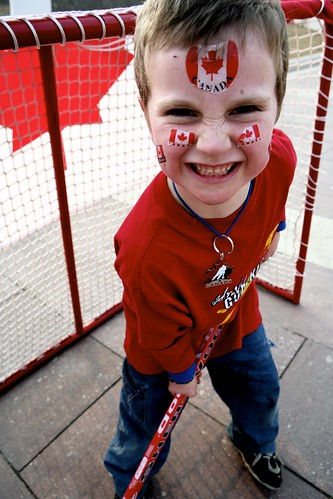My Hockey Blog
Tuesday, February 5, 2013
Top 5 Ice Hockey Goalie Tips For Beginners
Monday, April 30, 2012
Spring and Summer Hockey - When Is Hockey Too Much?

Over the past several years more and more focus has been placed on spring and summer hockey. Spring hockey is typically several practices and a few tournaments over an eight week period. Summer hockey is usually three on three once a week throughout the summer. Regardless of the timeframe more and more kids are playing hockey all year-round. That poses the question... when is too much hockey too much?
In a regular winter hockey season players are on the ice anywhere from twice to six or seven times per week depending on the level they play at. The course of a season lasts anywhere from six to seven months. To me that is a ton of ice, money and commitment. Once the season ends there's about a four-week gap and the spring teams are back on the ice. Once spring ends kids go right into summer hockey playing in arenas while the sun is shining outside. I don't know about you but when I do the same thing day in and day out I get a little restless, bored, complacent, disinterested, the list could go on and on. What makes it different for a child focusing on one thing twelve months of the year? The interest of children can waiver one day to the next. My six year-old like's cucumbers one day but the next is completely repulsed at the sight of them.
Mixing things up for child athletes is important. By focusing on one thing all of the time you're actually limiting their ability to discover other hidden talents they may have which will ultimately hurt them in the long run. Focusing on other sports and activities offers new insights to all sorts of things. Playing crossover sports that compliment hockey like lacrosse or soccer can teach them to think differently as well as help develop other skill sets and coordination that they would not get from playing in one environment like hockey all year-round.
Spring and summer hockey does not accelerate development. A child's ability can max out for a period of time and pushing them might actually cause a regression rather than a progression. By playing hockey all year-round you also run the risk of burnout and lack of motivation to play hockey. The most important trait a child can have when playing any sports is passion and desire. If a child is passionate about what they're doing and have burning desire they will find a way to get better, will want to practice and be the best that they can be on their own without hockey parents pushing them. When you look back over hockey history nearly all of the most successful hockey players that ever played the game hung their skates up at the end of the winter season and didn't touch them again until the fall. They succeeded out of love and passion for the game of hockey.
In my opinion spring and summer hockey is purely a cash cow. In fact, you can spend nearly more money playing spring hockey then what you would spend playing a whole season of winter hockey. In addition to this the schedule is often more intense due to the condensed time frame. Aside from the money the biggest risk you run is your child telling you when he/she is eleven or twelve that they no longer want to play hockey and that they've had enough. That in itself means that as a parent you have failed and not done your job in providing a good experience and memories for your child.
Remember, variety is the spice of life. Too much of a good thing can turn bad real fast especially with kids who are essentially on a daily journey, learning and exploring new things about life. Their interests can change in a heartbeat so nurture their hockey experience so they keep wanting more.
Visit the Wonderful World of Minor Hockey for advice, musings and insights into the fun, exciting and often intense game of youth hockey.
Article Source: http://EzineArticles.com/?expert=Maxim_Clark
http://EzineArticles.com/?Spring-and-Summer-Hockey---When-Is-Hockey-Too-Much?&id=6929739
